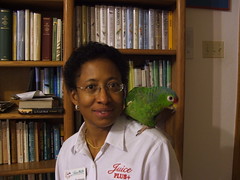The Naked Truth about Vitamin E - Part 1
Vitamin E was discovered in 1922 at the University of California. Herbert Evans and Katherine Bishop discovered it in green leafy vegetables. They discovered this when studying rats. They found that rats who ate a basic diet of rancid lard failed to reproduce. It was given the name Vitamin E or anti-sterility vitamin, because when the rats were fed a diet rich in vitamin E (green leafy vegetables, vegetable oils, and nuts), the rats were able to reproduce.
Vitamins are divided into two broad types: water soluble and fat soluble. As their names imply, some vitamins dissolve in water (Vitamin C) and some dissolve in fat (Vitamin A, D, E). The reason for this is that the body has two basic types of environments: lipid (fats) and water. The fat soluble and water soluble vitamins are specific to the environment where they can dissolve and do their work of scavenging free radicals, which is why they are called anti-oxidants.
Vitamin E, though commonly considered to be only tocopherol - and we usually equate it to alpha-tocopherol -- is really a complex of at least twelve tocopherols and tocotrienols which are further divided into non-desmethyl and desmethyl Vitamin Es. It has been found in recent studies that the non-desmethyl vitamin Es (alpha-tocopherol and alpha-tocotrienol) do not share the beneficial effects of the desmethyl vitamin Es (gamma and delta isomers of tocopherols and tocotrienols). [An isomer is any two or more substances that are made up of the same elements in the same proportions, but differ in properties because of differences in the arrangement of the atoms. (http://www.dictionary.com/). Different arrangements in the same molecule produces different effects in our body.]
In nature, meaning in food, Vitamin E travels as a complex or group. I liken it to a football team; there are different types of players, and it takes all of them to make a touchdown and to win a game. You cannot send in 11 quarterbacks and expect to win a game. That is what you are doing when you take Vitamin E as a supplement. You end up with a lot of the same molecules and no other molecules to help do the job at hand. Recent studies have shown that sometimes this overload of the same molecule (alpha-tocopherol in doses of 400mg or greater) can promote disease rather than prevent it.
You might say, 'But my vitamin E is natural'. Well, consider this: once alpha-tocopherol is separated from its complex, it becomes unstable in storage, meaning that the duration of its shelf-life is decreased. Vitamins that are exposed to oxygen undergo oxidation - that is what you see happens to an apple that turns brown. The vitamin C has oxidized and turned the apple brown. To improve the stability of any vitamin E molecule it is esterified, which is a process where a molecule containing carbon is combined with an alcohol to make it more stable and last longer when exposed to oxygen. The fact that it is more stable means that it is now less able to act as an anti-oxidant, because it will not react with oxygen, therefore rendering it useless to do its job. Also, one has to consider the fact that when alpha-tocopherol is separated from its 'team mates' it loses up to 90 % of its potency!
Other Vitamin E preparations state that they are 'mixed tocopherols'. That means that they have a pre-determined amount of esterified alpha-tocopherol and lesser amounts of other tocopherols. Other formulations are called 'full spectrum vitamin E' which are not uniform in the amount of tocotrienols that they contain and are usually low in or have no delta-tocotrienol and are high in alpha-tocotrienol and tocopherols. None of these preparations have the same ratio of tocopherols (there are 4) and tocotrienols (there are four) that are found in food.
The last Vitamin E that we need to consider are the mixed l-d alpha-tocopherol. L-D stands for levo and dextro. Dextro is the shape of the alpha-tocopherol found in nature and Levo is it mirror image. It was thought that the Levo form was harmless but that has been lately brought into question. Molecular receptors and vitamins work on a lock and key system. Only the correct key will fit in the lock and turn it. If you try to put in a mirror image of a key into a lock, do you think that it would fit in the lock?
So, what should we do? Where should we get our Vitamin E and in what form? I believe the clinical evidence backs up the theoretical reasoning that we should get it from food.


0 Comments:
Post a Comment
<< Home